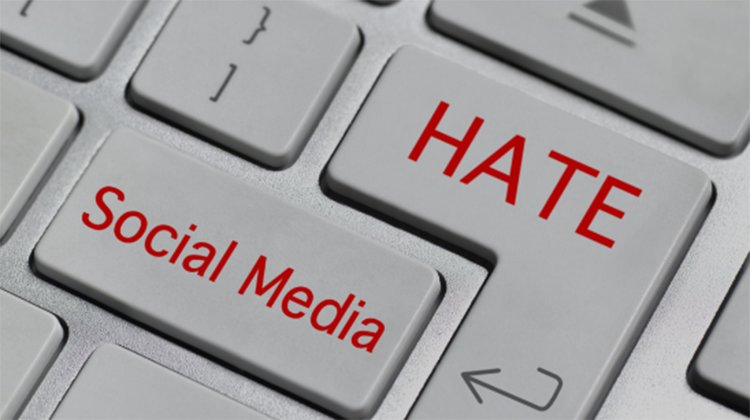
There were 25 organized troll campaigns targeting women reporters in the first half of 2020, according to Ms. Magazine. Additionally, the magazine cited 267 attacks and threats, with many mentioning women’s appearance and sexuality, including death and rape warnings.
To make matters worse, women of color were 34% more likely than white women to be mentioned in abusive, sexist and racist tweets.
In any other profession, supervisors would be responsible for addressing and preventing those attacks. But publishers and general managers typically advise reporters to block the trolls and ignore the digital assaults.
Media companies can do more. As I recommended in a recent article for the Poynter Institute, a journalism research organization, supervisors can:
To be sure, this is not an American phenomenon. Last year, Irene Khan, the United Nations expert on freedom of opinion and expression, said, “From rape, sexual assault, death and rape threats and sexual harassment to trolling, gendered hate speech, disinformation, smear campaigns and threats to family members — women journalists are subjected to threats and attacks in the course of their work just for being journalists.”
Khan recommended, among other actions, that social media companies make safe digital spaces for women. She also held media companies responsible “to ensure zero tolerance of gender violence or harassment in the workplace.”
Perhaps most important was the suggestion that politicians and community leaders “refrain from making statements that could put the women at risk.”
Earlier this year, the Independent Lens reported that “the internet is a conduit for an electronic wave of hatred, harassment, and threats directed at female journalists.” The web is more dangerous for women journalists than the streets. “In a survey of female journalists, 73% had experienced gender-based violence online.”
UNESCO has published “The Chilling: Global trends in online violence against women journalists.” Researchers from 16 countries found that online attacks have real-life impacts. “Not only do they affect mental health and productivity, but physical attacks and legal harassment are increasingly seeded online.”
The report emphasized that women journalists “disadvantaged by racism, homophobia, religious bigotry and other forms of discrimination face additional exposure to online attacks.”
The reason for these attacks is obvious: power.
I am a dual citizen of the United States and Malta. In 2017, Maltese journalist and blogger Daphne Anne Caruana Galizia was assassinated when a bomb exploded in her car. She was a controversial figure in Malta. Her blog, Running Commentary, became as popular as many traditional media outlets.
There are many theories about why she was killed, beyond the scope here. But one of them, in my view, was how she harnessed the power of the internet. For that, she paid the ultimate price.
Journalism in America used to be a male-dominated profession. That is no longer the case. The demographics of 6,500-plus U.S. journalists show that 53.4% are women and 46.6% are men. Some 70.8% are white, followed by Hispanic or Latino (12.0%), Asian (8.5%) and Black or African American (5.4%).
Women are shaping the news, providing different perspectives.
U.S. media companies have been hiring more women, including supervisors. Gannett publishes an annual diversity report. In 2020, USA TODAY Editor-in-Chief Nicole Carroll reported that 48.1% were women and 51.9% were men. “In 2017,” Carroll wrote, “women were only 36% of our team.”
Those numbers have improved. In 2021, USA TODAY reported that 51.7% of their newsroom workers were women and 48.3% men, with more women now as managers, up from 56.7% to 59.4%.
While these statistics are impressive, they do little to resolve the continuing issue of attacks on women journalists.
Media companies should encourage reporters to document digital and personal attacks. Those are easy to assemble via text, email, voice mail and screenshots. They should be compiled in regular reports disseminated to the public and accompanied by articles documenting what journalists, especially women, are subjected to in the course of doing their jobs.
Additionally, technologies are being developed to alert supervisors about abuse. One such application is called Harassment Manager. “Individuals can review tweets based on hashtag, username, keyword or date,” detecting toxic comments.
The way to combat abuse against women journalists is to use the internet and the First Amendment to alert society, holding offending parties accountable whenever possible.
Michael Bugeja, a distinguished professor of journalism at Iowa State University, is a regular contributor at Poynter Institute, the Iowa Capital Dispatch, and the Des Moines Register. He teaches media ethics and technology and social change. Among his several books are three by Oxford University Press: “Interpersonal Divide: Searching for Community in a Technological Age,” “Interpersonal Divide in the Age of the Machine” and “Living Ethics Across Media Platforms.” He has twice won the distinguished Clifford Christians Award for Research in Media Ethics. His latest work is “Living Media Ethics: Across Platforms,” Routledge/Taylor & Francis.
Comments
No comments on this item Please log in to comment by clicking here